Welcome to Visit Worcester, England Places
The Walkfo guide to things to do & explore in Worcester, England
![]() Visit Worcester, England places using Walkfo for free guided tours of the best Worcester, England places to visit. A unique way to experience Worcester, England’s places, Walkfo allows you to explore Worcester, England as you would a museum or art gallery with audio guides.
Visit Worcester, England places using Walkfo for free guided tours of the best Worcester, England places to visit. A unique way to experience Worcester, England’s places, Walkfo allows you to explore Worcester, England as you would a museum or art gallery with audio guides.
Visiting Worcester, England Walkfo Preview
Worcester is a cathedral city and the ceremonial county town of Worcestershire. The estimated population in 2019 was 102,791. The Battle of Worcester in 1651 was the final one in the English Civil War, where Oliver Cromwell’s New Model Army defeated King Charles II’s Royalists. When you visit Worcester, England, Walkfo brings Worcester, England places to life as you travel by foot, bike, bus or car with a mobile phone & headphones.
Worcester, England Places Overview: History, Culture & Facts about Worcester, England
Visit Worcester, England – Walkfo’s stats for the places to visit
With 70 audio plaques & Worcester, England places for you to explore in the Worcester, England area, Walkfo is the world’s largest heritage & history digital plaque provider. The AI continually learns & refines facts about the best Worcester, England places to visit from travel & tourism authorities (like Wikipedia), converting history into an interactive audio experience.
Worcester, England history
Early history
The trade route past Worcester, later part of the Roman Ryknild Street, dates from Neolithic times. It commanded a ford crossing over the River Severn, which was tidal below Worcester. Charcoal from the Forest of Dean enabled Romans to operate pottery kilns and ironworks.
Anglo-Saxon town
At its settlement in the 7th century by the Angles of Mercia it was Weogorna. After centuries of warfare against the Vikings and Danelaw it had become a centre for the Anglo-Saxon army. In 680, Worcester was chosen as their fort over the larger Gloucester, and the royal court at Winchcombe as the episcopal see of a new bishopric. Worcester became a centre of monastic learning and church power.
Medieval
Worcester Castle was in place by 1069, its outer bailey built on land that had previously been the cemetery for the monks of the Worcester cathedral chapter. Main road from London to mid-Wales ran through Worcester, then north-west to Kidderminster, Bridgnorth and Shrewsbury, and via Bromsgrove to Coventry and on to Derby. The city was attacked in 1139, 1150 and 1151 during the civil war between King Stephen and Empress Matilda, daughter of Henry I.
Craft guilds
Medieval and early modern Worcester developed a system of craft guilds to regulate who could work in a trade, lay down trade practices and training. The city’s late medieval ordinances banned tilers from forming a guild and encouraged tilers to settle in Worcester to trade freely.
Early modern period
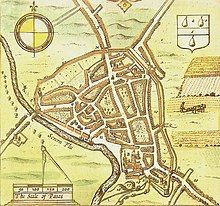
The city became a county corporate in 1621, giving it autonomy from local government. The city was occupied by the Royalists during the First Civil War and Second Civil War. Worcester was a garrison town and had to sustain and billet a large number of Royalist troops. Charles II was easily defeated by Cromwell’s forces of 30,000 men in 1651.
Industrial revolution and Victorian era
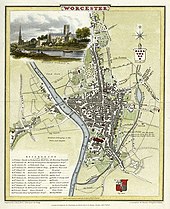
Worcester in the late 18th and early 19th centuries was a major centre for glove-making, employing nearly half the glovers in England at its peak (over 30,000 people) In 1815 the Worcester and Birmingham Canal opened. Railways reached Worcester in 1850, with Shrub Hill, initially only running to Birmingham. Foregate Street was opened in 1860.
20th century to present
During the Second World War, the city was chosen to be the seat of an evacuated government in case of mass German invasion. The War Cabinet, along with Winston Churchill and some 16,000 state workers, would have moved to Hindlip Hall (now part of the complex forming the Headquarters of West Mercia Police) Fuel storage depot was built for the government in 1941/1942 by Shell Mex & BP (later operated by Texaco)
Worcester, England culture & places
Festivals and shows
Every three years Worcester becomes home to the Three Choirs Festival. Famous for championing English music, especially that of Elgar, Vaughan Williams and Gustav Holst. The CAMRA Worcester Beer, Cider and Perry Festival takes place for three days each August. The Victorian-themed Christmas Fayre is a busy event in late November/early December.
Arts and cinema

The famous 18th-century actress Sarah Siddons made her acting début at the Theatre Royal in Worcester. Her sister Ann Julia Kemble Hatton, otherwise Ann of Swansea, was born in the city. The Swan Theatre is the base for the Worcester Repertory Company.
Worcester, England economy & business
Glove-making
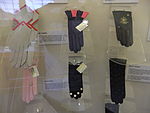
At this time nearly half the glove makers in Britain could be found in Worcestershire. In the 19th century, the industry declined as import taxes on foreign competitors, mainly French, were much reduced. By the mid-20th century only a few Worcester glove firms survived.
Manufacturing
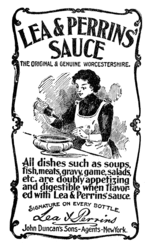
Lea & Perrins Worcestershire sauce is made and bottled at a Midland Road factory, its home since 1897. Worcester Porcelain operated in Worcester until 2009, when the factory closed due to the recession. The city is home to the European manufacturing plant of Yamazaki Mazak Corporation.
Retail trade
Worcester’s main shopping centre is the High Street, with several major retail chains. The city is a major retail centre with several covered shopping centres. The other main thoroughfares are the Shambles and Broad Street. Retailers such as ASDA, B & M and Aldi are located close to St Martin’s Quarter.
Worcester, England landmarks
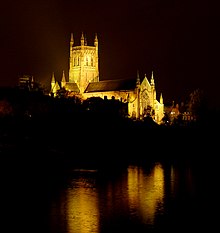
Anglican Worcester Cathedral was known as Worcester Priory before the English Reformation. The city’s three main open spaces include Cripplegate Park, Gheluvelt Park and Fort Royal Park. A statue of Sir Edward Elgar, commissioned from Kenneth Potts, was unveiled in 1981.
Worcester, England geography / climate
Notable suburbs include Barbourne, Blackpole, Cherry Orchard, Claines, Diglis, Dines Green, Henwick, Northwick, Red Hill, Ronkswood, St Peter the Great (also known as St Peter’s) and Tolladine. Most of Worcester is on the eastern side of the River Severn.
Climate
Worcester enjoys a temperate climate with generally warm summers and mild winters. In 1670, the River Severn burst its banks in the worst flood ever seen by the city. During the winters of 2009–2010 and 2010–2011, the city underwent long periods of sub-freezing temperatures and heavy snowfalls.
Why visit Worcester, England with Walkfo Travel Guide App?
![]() You can visit Worcester, England places with Walkfo Worcester, England to hear history at Worcester, England’s places whilst walking around using the free digital tour app. Walkfo Worcester, England has 70 places to visit in our interactive Worcester, England map, with amazing history, culture & travel facts you can explore the same way you would at a museum or art gallery with information audio headset. With Walkfo, you can travel by foot, bike or bus throughout Worcester, England, being in the moment, without digital distraction or limits to a specific walking route. Our historic audio walks, National Trust interactive audio experiences, digital tour guides for English Heritage locations are available at Worcester, England places, with a AI tour guide to help you get the best from a visit to Worcester, England & the surrounding areas.
You can visit Worcester, England places with Walkfo Worcester, England to hear history at Worcester, England’s places whilst walking around using the free digital tour app. Walkfo Worcester, England has 70 places to visit in our interactive Worcester, England map, with amazing history, culture & travel facts you can explore the same way you would at a museum or art gallery with information audio headset. With Walkfo, you can travel by foot, bike or bus throughout Worcester, England, being in the moment, without digital distraction or limits to a specific walking route. Our historic audio walks, National Trust interactive audio experiences, digital tour guides for English Heritage locations are available at Worcester, England places, with a AI tour guide to help you get the best from a visit to Worcester, England & the surrounding areas.
“Curated content for millions of locations across the UK, with 70 audio facts unique to Worcester, England places in an interactive Worcester, England map you can explore.”
Walkfo: Visit Worcester, England Places Map
70 tourist, history, culture & geography spots
Worcester, England historic spots | Worcester, England tourist destinations | Worcester, England plaques | Worcester, England geographic features |
| Walkfo Worcester, England tourism map key: places to see & visit like National Trust sites, Blue Plaques, English Heritage locations & top tourist destinations in Worcester, England | |||
Best Worcester, England places to visit
Worcester, England has places to explore by foot, bike or bus. Below are a selection of the varied Worcester, England’s destinations you can visit with additional content available at the Walkfo Worcester, England’s information audio spots:
 | Glover’s Needle The Glover’s Needle (or St Andrews Spire) is a spire-carrying tower in Worcester, England . It is located in the city of Worcester . |
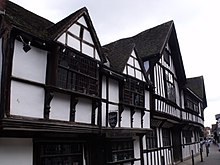 | Greyfriars, Worcester Greyfriars, Worcester is a Grade I listed building in Worcester, England . It is believed to have been built as a house and brew-house c.1485 for Thomas Grene, brewer and High Bailiff of Worcester . It has been in the ownership of the National Trust since 1966 . |
 | The Mug House The Mug House is a traditional public house located in the village of Claines, Worcestershire, England, which dates back to the 15th century . |
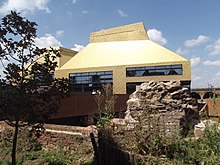 | University of Worcester The University of Worcester is a public research university based in Worcester, England. With a history dating back to 1946, the university began awarding degrees in 1997 and was granted full university status in 2005. |
 | St Peter the Great, Worcester St Peter the Great or St Peter’s is a suburb and civil parish of Worcester in Worcestershire. It is south of the city centre, on the east side of the River Severn, near Junction 7 of the M5 motorway. In the 2011 census, the parish population was recorded as 5,851. |
 | Norton Barracks Norton Barracks is a military installation in Norton, Worcestershire. The keep is a Grade II listed building and is located in Norton. |
Visit Worcester, England plaques
![]() 39
39
plaques
here Worcester, England has 39 physical plaques in tourist plaque schemes for you to explore via Walkfo Worcester, England plaques audio map when visiting. Plaques like National Heritage’s “Blue Plaques” provide visual geo-markers to highlight points-of-interest at the places where they happened – and Walkfo’s AI has researched additional, deeper content when you visit Worcester, England using the app. Experience the history of a location when Walkfo local tourist guide app triggers audio close to each Worcester, England plaque. Explore Plaques & History has a complete list of Hartlepool’s plaques & Hartlepool history plaque map.